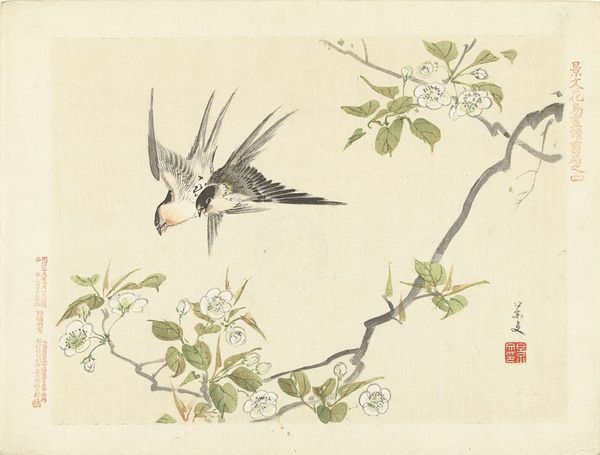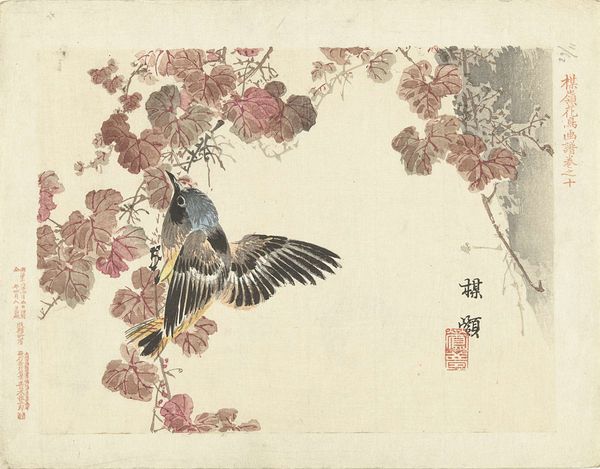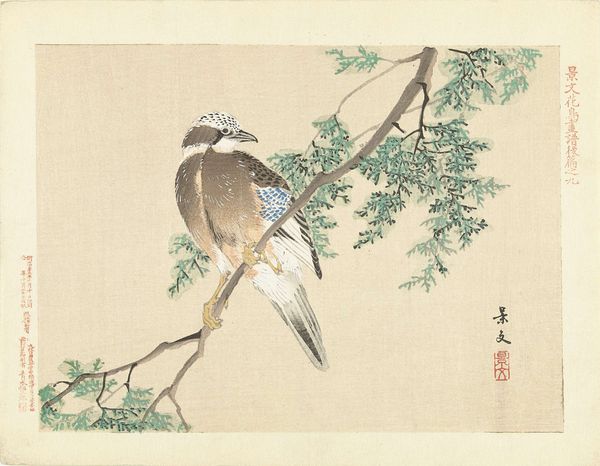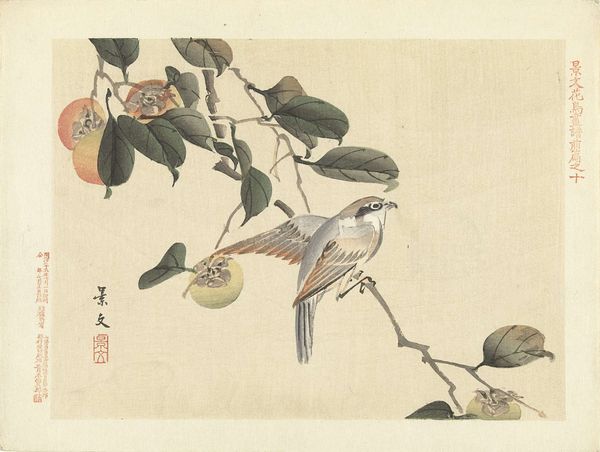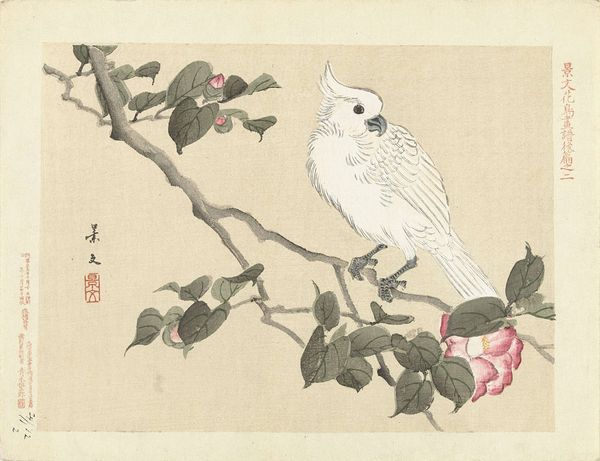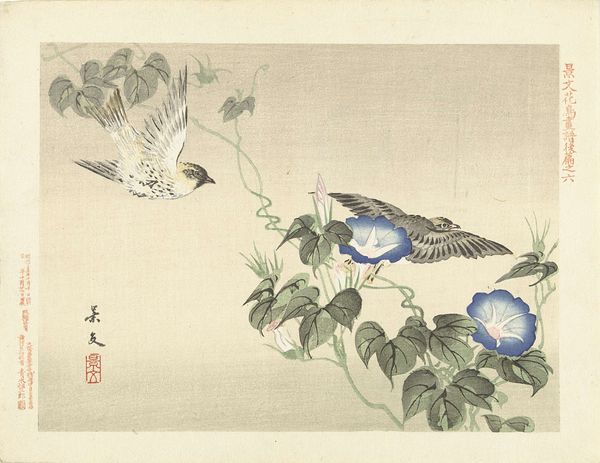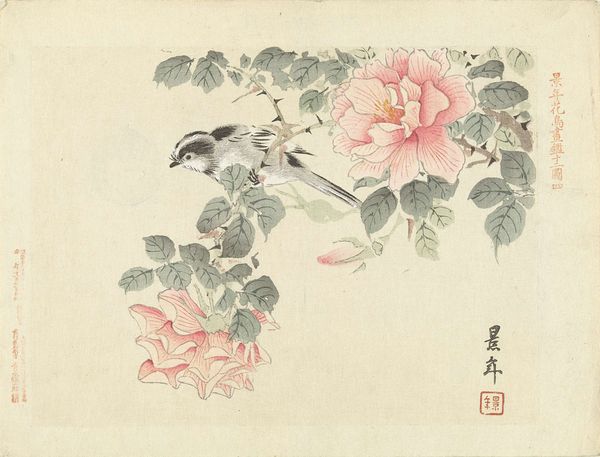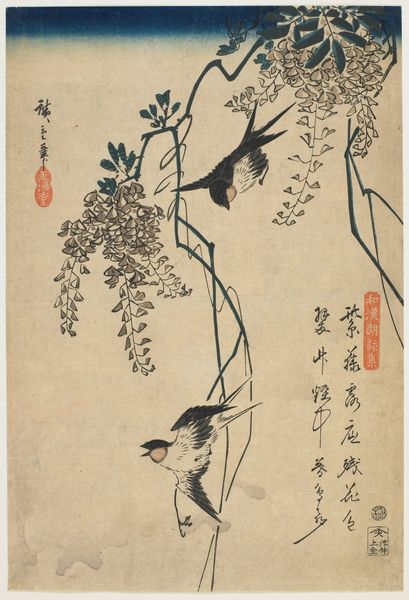
Dimensions: height 208 mm, width 274 mm
Copyright: Rijks Museum: Open Domain
Curator: Welcome. Before us is “Zwart-rode vogel,” which translates to “Black-Red Bird," a watercolor work by Matsumura Keibun, dating from around 1892-1897. What strikes you about it? Editor: Immediately, I sense tranquility. The bird's poised stillness against the backdrop of verdant leaves evokes a quiet corner of nature. I’m drawn to the composition, a play between negative space and meticulously detailed elements. Curator: Yes, observe how Keibun’s deliberate arrangement creates a powerful sense of balance. The asymmetrical placement of the bird, anchored to a delicate branch, reveals his mastery of spatial relationships. There's an interesting tension at play. Editor: It's true; the contrast between the bird's sharp plumage—those bold blacks and reds—and the muted greens hints at deeper symbolic resonances. Birds in Asian art often signify freedom, messengers bridging realms. Does the juxtaposition of colors speak to something similar here? Curator: The stark chromatic division certainly invites symbolic reading. Black could be perceived as knowledge, but the vermillion implies vitality and passionate expression. He places complementary colors in perfect opposition which generates not chaos but harmony. Editor: And the subtle gradations within those colors—observe how the black feathers are not simply flat, but textured with delicate white markings. That invites the viewer into the painting on a microscopic level. It encourages an intimate connection. I am intrigued by the surrounding foliage; the leaves seem almost like delicate lace. Curator: The foliage surrounding the bird could suggest themes of seasonality and cyclical rebirth. Editor: The delicacy of the medium contrasts strikingly with the power suggested by those colors. Considering the date, how might this ukiyo-e subject reflect broader aesthetic trends of the time? Was the natural world of interest in particular ways? Curator: That's perceptive. Indeed, around the turn of the century, there was growing appreciation for pure landscapes and depictions of nature's beauty, influenced by wider trends of orientalism throughout Europe. This piece is a striking testament. Editor: It’s more than a mere pretty bird. There is an intense connection. The naturalism on view makes this quite extraordinary and powerful. Thank you, that has really given me a new appreciation of this composition. Curator: Likewise, contemplating the cultural and symbolic framework alongside its formal structure provides us deeper appreciation of this deceptively subtle work of art.
Comments
No comments
Be the first to comment and join the conversation on the ultimate creative platform.
